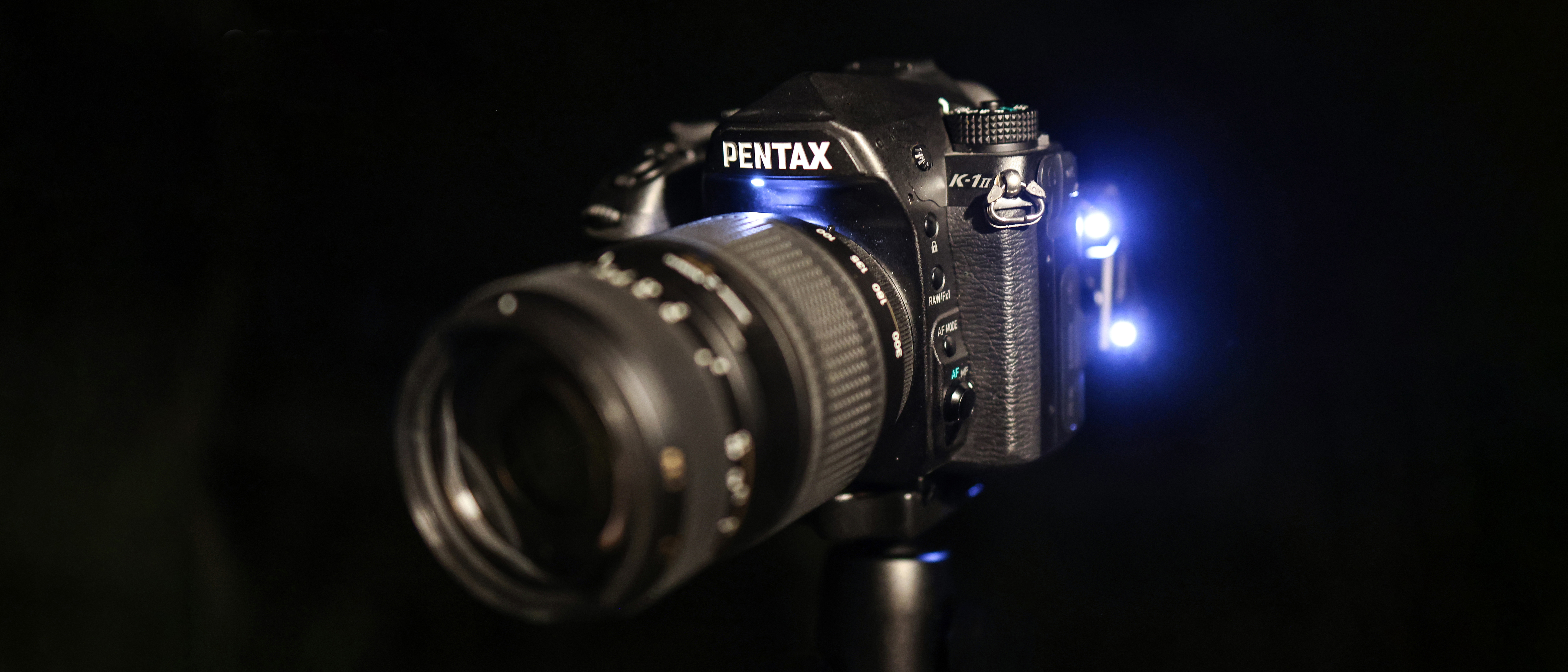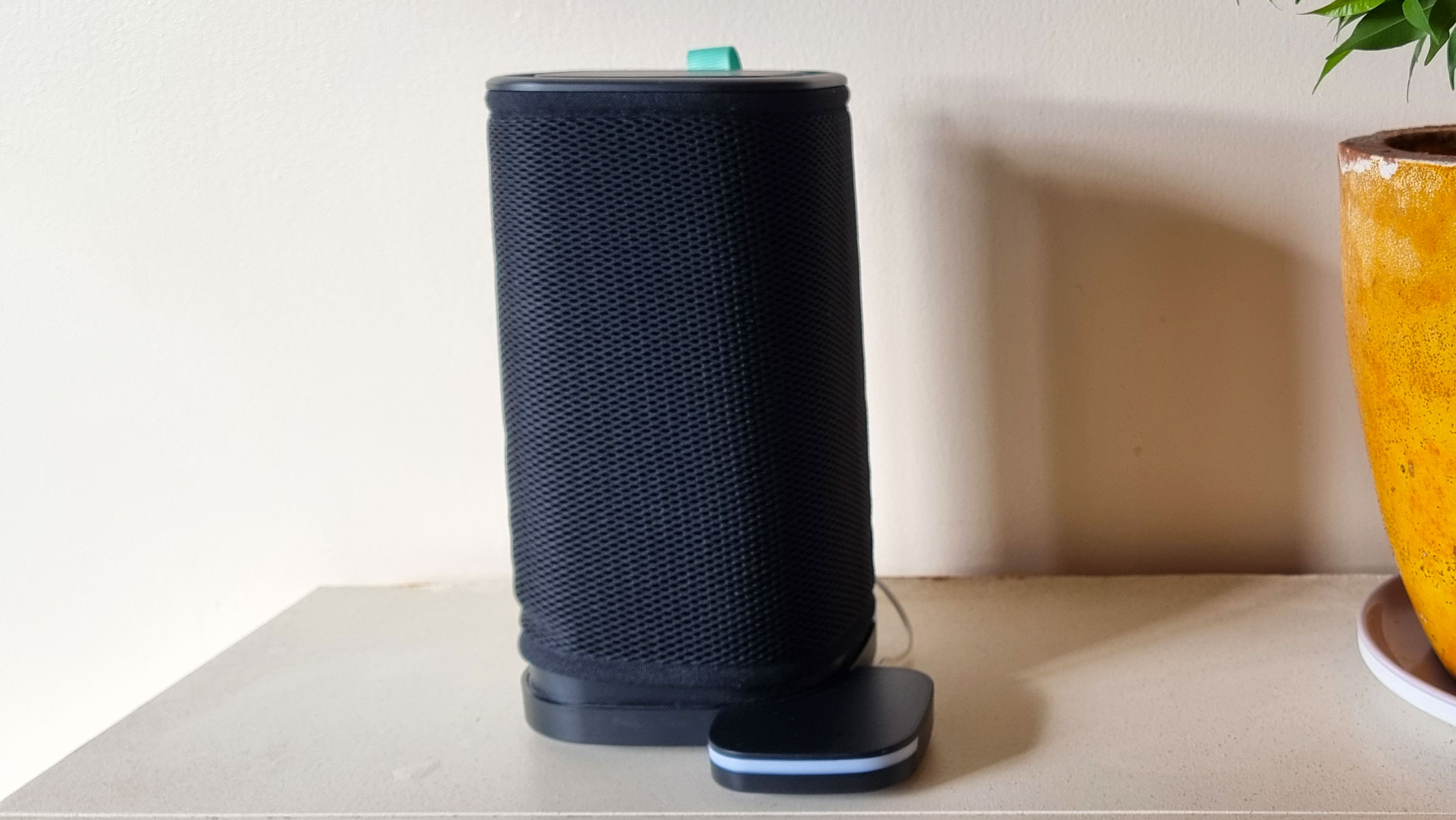Live Science Verdict
Like a muscle car, the Pentax K-1 Mark II isn’t shy or subtle – it’s big, robust and humming with horsepower, but it’s not the best video option.
Pros
- +
Night Vision mode
- +
Great stabilization
- +
Astrotracer shooting
Cons
- -
Only 4.4fps bursts
- -
No 4K video
- -
Big, bulky and heavy
Why you can trust Live Science
Type: DSLR
Sensor: 36.4MP full frame
Lens mount: Pentax K
ISO range: 100 to 819,200
Viewfinder: Optical, 100%
Video capability: 1080p 60i
Weight: 2.23lbs
Size: 5.37 x 4.33 x 3.37 inches
Memory: 2x SD UHS-II
Think DSLRs are dead? Don’t say that in front of the Pentax K-1 Mark II, as this mean machine might just slap the taste out of your mouth. Where most modern mirrorless cameras are sleek, svelte, lightweight and unobtrusive, the K-1 Mark II has no interest in being a shrinking violet.
Instead this is a big, bulky, sturdy, shoot-first body that’s built like a lumberjack – and packs just as much muscle. It boasts a full frame 36.4MP image sensor to deliver superb resolution, backed up by an impressive sensitivity of ISO100-819,200.
This imbues it with truly enviable low light performance – which, along with some clever party tricks (which we’ll come onto later), makes it one of the best astrophotography cameras. Pair this with one of the best astronomy books to help guide you around the night sky and you'll have a winning combo that can't be beat.
In an unusual feature for a DSLR, the K-1 Mark II features in-body image stabilization (IBIS) in the form of Pentax Shake Reduction II system, which offers up to five stops of compensation. This does much more than just minimize camera shake, though.
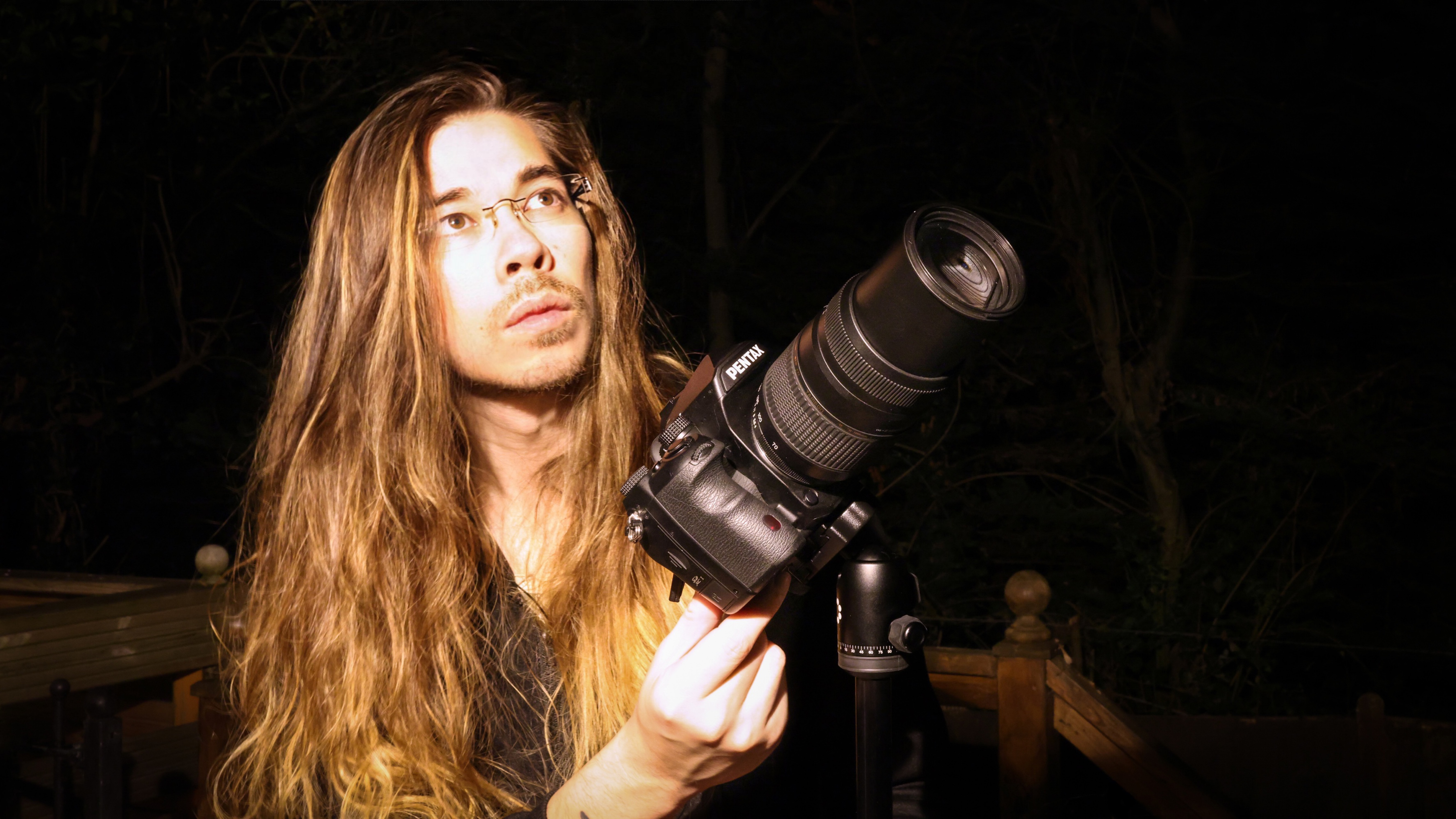
By using the IBIS system to make micro-movements to the sensor, it simulates anti-aliasing, preventing artefacts such as moiré as if it had a low-pass filter. The same sensor-shifting magic also enables you to straighten wonky horizons, or create an ultra high-resolution image (formed from four separate shots) with greater detail and RGB reproduction.
The Pentax K-1 Mark II is also one of the ever-more endangered species of camera with a built-in GPS, enabling you to geotag your images for identification and easier cataloging.
Pentax K-1 Mark II review: Design
- Fully weather sealed
- Feels great in the hand
- Smart Function dial
Even if you’re a seasoned DSLR shooter, the Pentax body feels bulbous. And if you’re used to dainty mirrorless models, it feels like somebody has overinflated it like a comedy balloon. However, for a rugged all-weather camera built to withstand the elements, it just feels right; it’s big and boxy and could probably be used to fend off wildlife on a safari.
The chunky grip gives great purchase, and the weight of the magnesium alloy body makes it feel excellently balanced with bigger lenses. As a flagship professional camera it is fully weather sealed (when using appropriate lenses, of course) and all of the many controls, buttons and dials feel suitably sturdy while remaining highly responsive.
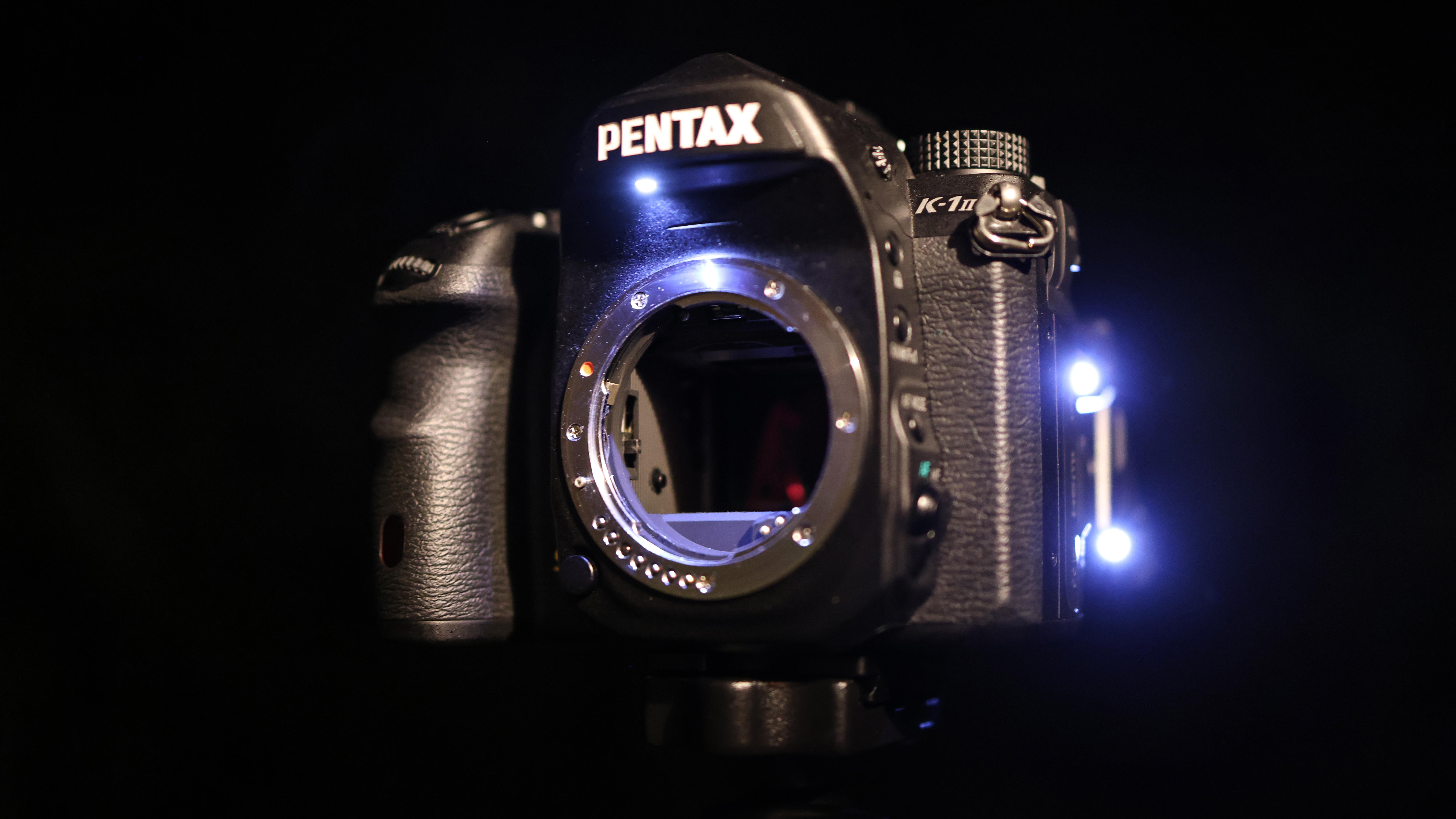
Where other cameras make a binary choice between a tilting or fully articulating rear screen, the K-1 Mark II marches to the beat of its own drum with a unique scissor-mechanism design. This enables the screen to tilt up, down and sideways while remaining on the same optical axis as the lens.
It’s an intriguing choice, though one we’re not altogether fond of – it feels over-fiddly and we tend to leave it flat whenever we’re shooting. Sadly, the screen doesn’t support touch controls either, which isn’t the end of the world but does feel like a bit of a glaring omission. Still, as with all Pentax cameras, the quality of the optical viewfinder is nothing short of glorious – crystal clear, with 100% coverage – so using the pentaprism is a joy.
In addition to a Standard Mode dial, the top plate also features a Smart Function dial. This can be used to quickly select options such as ISO and exposure compensation, which can then be adjusted by a third (unlabeled) dial, rather than having to click into or out of a mode or menu to make changes. The plate also features an LCD to check your settings.

Pentax K-1 Mark II review: Functionality
- Night vision mode!
- Astrotracer technology
- Pixel Shift Resolution System II
The K-1 Mark II boasts some utterly fantastic functionality, particularly when it comes to low light photography in general and astrophotography in specific. We’ve already mentioned the impressive ISO100-819,200 sensitivity, which delivers stunningly clean images and dynamic range that eclipses highly regarded performers like the Nikon D859, Sony A7R III and Canon EOS 5D Mark IV. Check out these stunning views of the night sky from the Royal Observatory Greenwich's Astronomy Photographer of the Year competition for inspiration.
That meaty 36.4MP sensor, coupled with clever processing power, can natively handle shooting in low light conditions like a breeze. However, when it comes to astro shooting, it has some stunning party pieces.
Central to this is its Astrotracer function. This inspired bit of technology unifies the in-body image stabilization with the integrated GPS. The result is that, instead of the IBIS being used (as was designed) to move the sensor in order to compensate for camera shake, the GPS tracks the movement of the stars and the IBIS adjusts the sensor to follow them – enabling you to take longer exposures without introducing unwanted star trails!
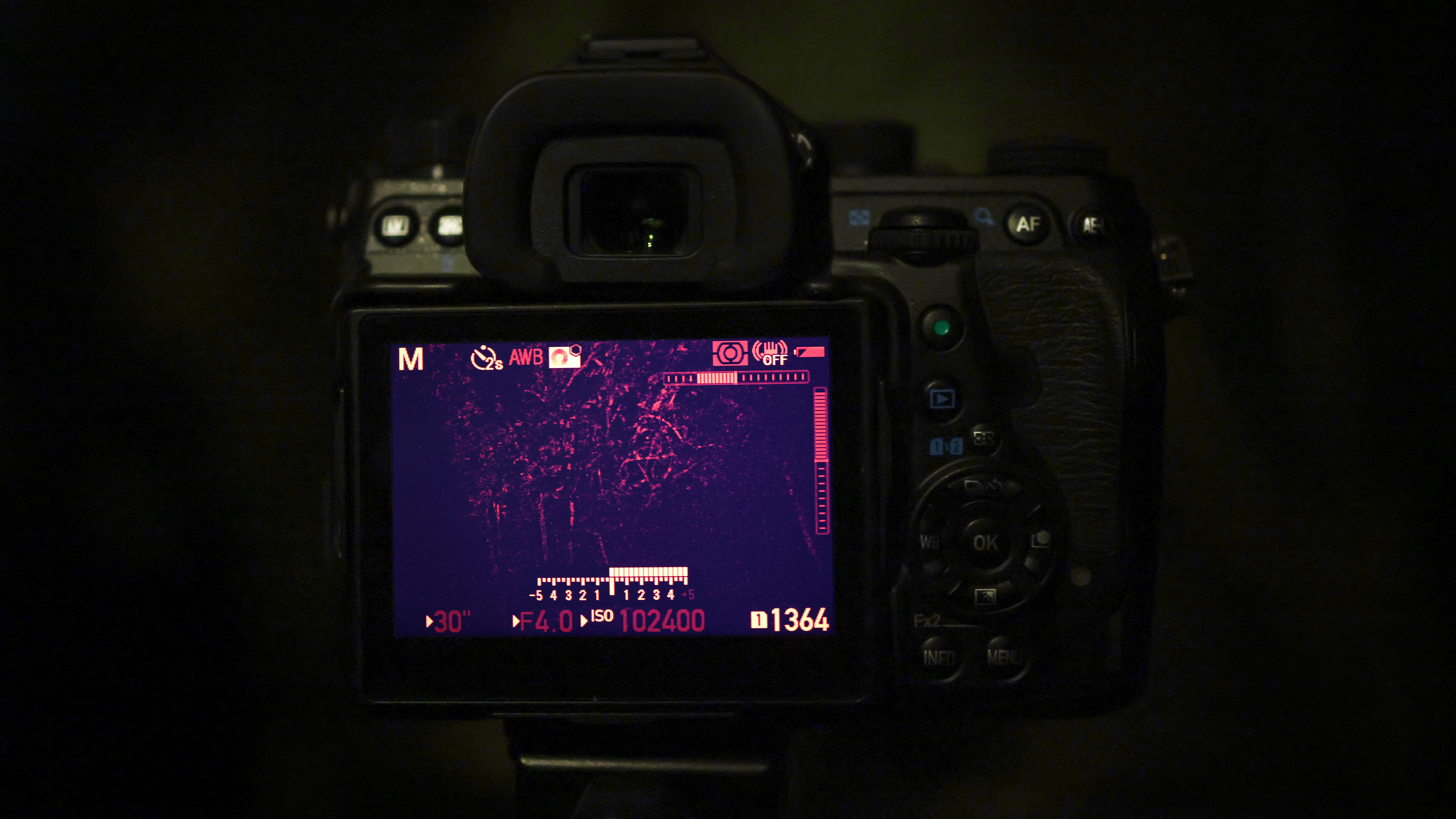
It’s a brilliant bit of thinking, and we got great results when shooting with the K-1 Mark II on nights with poor visibility. Better yet, the camera has really been designed with astrophotographers in mind.
It has a Night Vision option to turn the rear LCD screen red, to optimize it for shooting in the dark, and the body features external illumination that lights the underside of the LCD, the camera mount (so you can change lenses in the dark) and the key buttons light up as well.
The aforementioned Pixel Shift Resolution System II, likewise powered by clever use of the IBIS system, also makes the output of the beefy sensor even better. While it doesn’t produce a larger image (unlike other cameras, such as the Olympus OM-D E-M1X, whose High Res Shot mode generates an 80MP image from the 20.1MP sensor), it does produce a richer and more detailed image, delivering archive-quality shots should you need them.
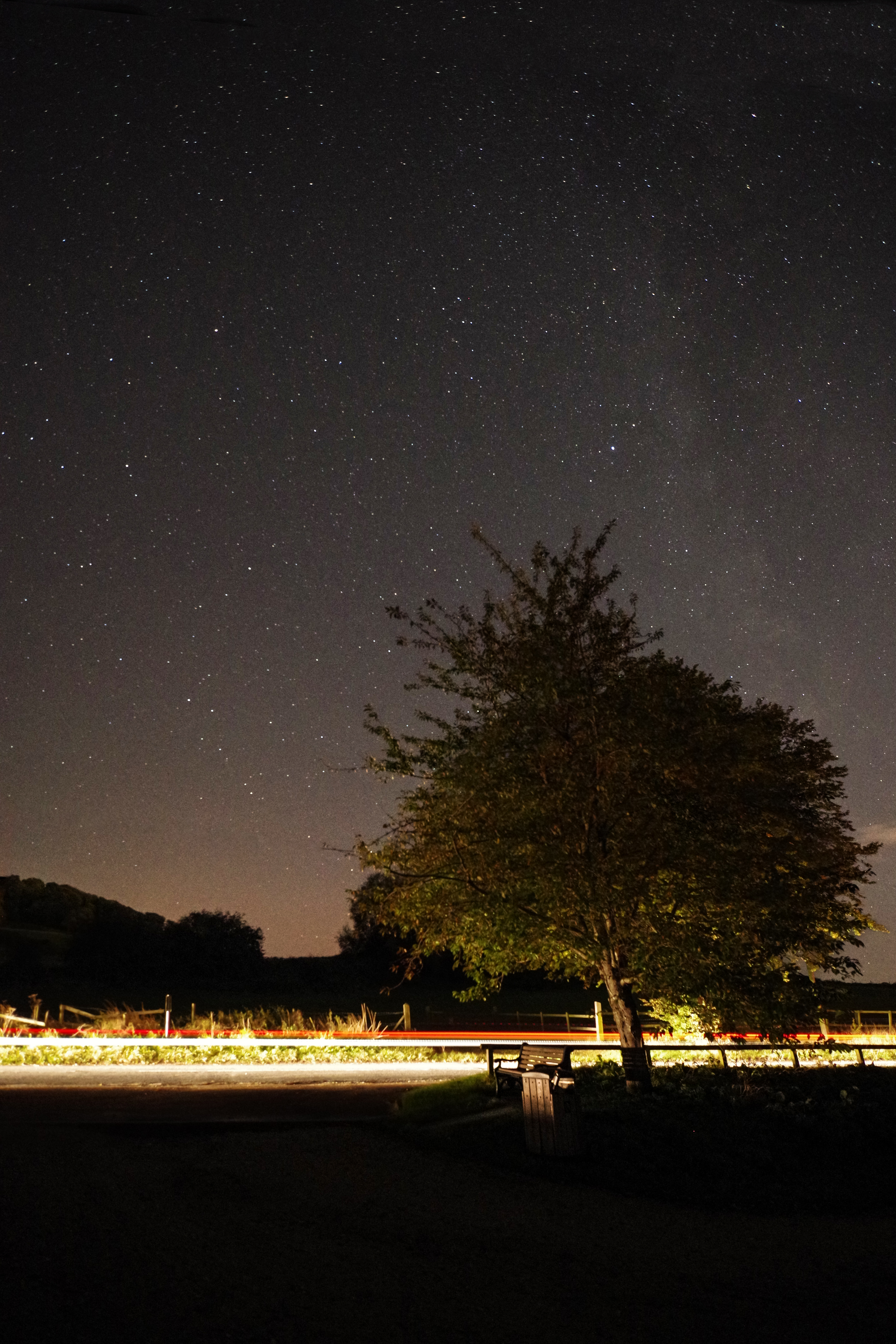
Pentax K-1 Mark II review: Performance
- Superb image quality
- Amazing astro shooting
- Superb stabilization
Kit lens: HD Pentax-D FA 28-105mm F3.5-5.6 ED DC WR
Best wide lens: HD Pentax-D FA 15-30mm f/2.8 ED SDM WR
Best zoom lens: HD Pentax-D FA* 70-200mm f/2.8 ED DC AW
Spare battery type: D-LI90P
Memory card: SanDisk Extreme Pro 128GB
While the Pentax K-1 Mark II is a great photographic workhorse, it absolutely comes into its own when it comes to night time and low light shooting. It really does feel like it was designed with this genre specifically in mind.
We’ve used dedicated astro cameras like the Canon EOS Ra, which basically just have a modified sensor to allow more frequencies of light to be captured more easily, but this camera has actually been designed to be used as a night shooter.
It’s also an incredibly capable camera for regular photography, too. The resolution is greater than you’ll find in any DSLR short of the (now discontinued) Canon EOS 5DS/R, and is absolutely ideal for outdoor shooting, landscapes, still life, studio and portraiture.
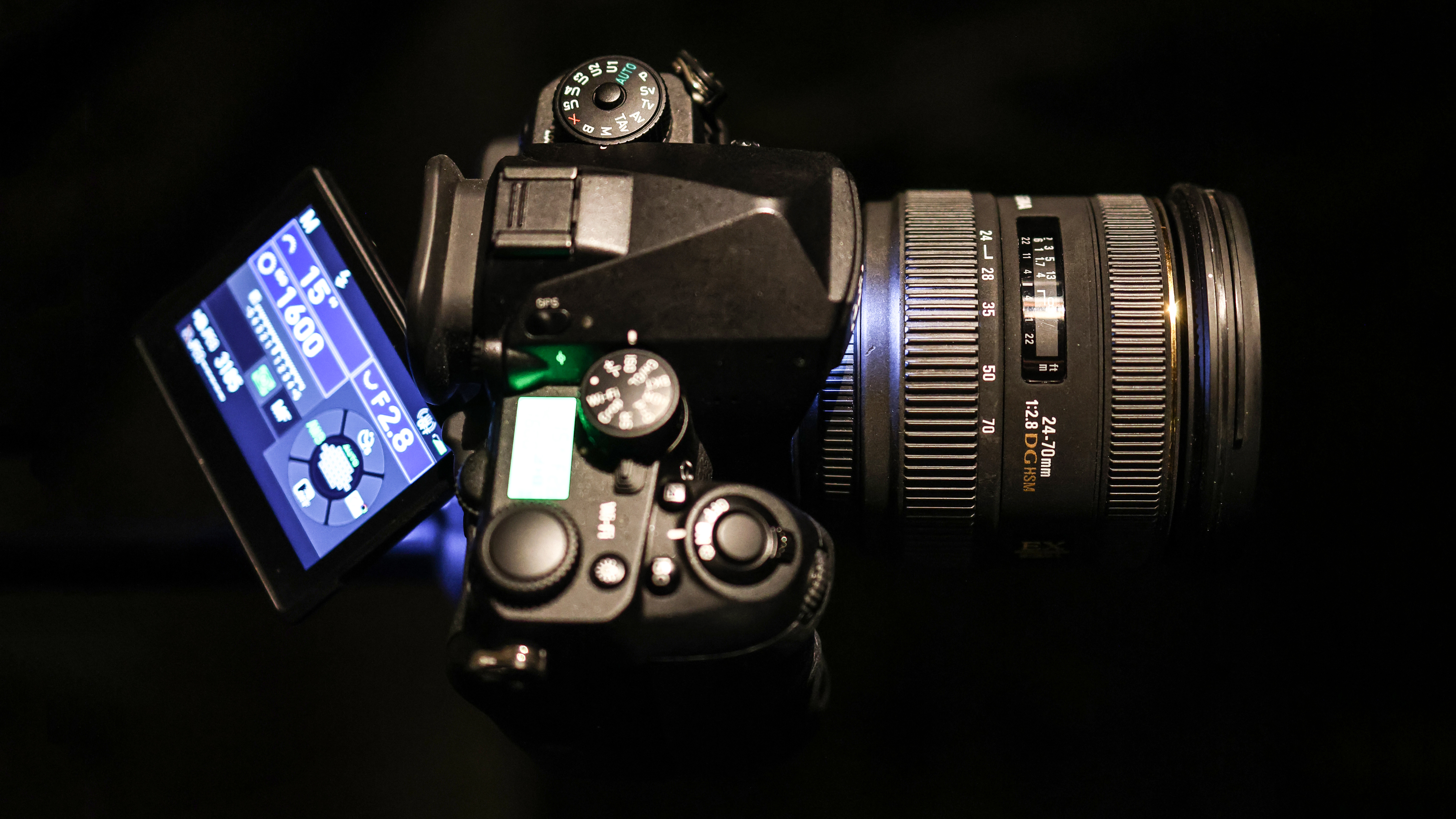
It is not, however, a particularly fast camera; with a maximum continuous shooting speed of 4.4fps, this isn’t something that’s well suited to shooting sports, fast action or erratic wildlife.
Likewise, its video specs are very limited – it doesn’t capture in 4K, and its 1080p tops out at 60i. Yes, 60i, as in interlaced (not 60p, as in progressive) which is hilariously redundant these days. Couple that with the fact that Live View loses the phase detect AF system, that isn’t a camera for video either.
For everything else, though, it’s absolutely fantastic. Having a DSLR with in-body image stabilization is a rarity, but not only is it here, we found that it works really well. The weather sealing and build quality mean that we wouldn’t have a heart attack if we left it on a tripod in the rain, and the images produced are pretty dang flawless.
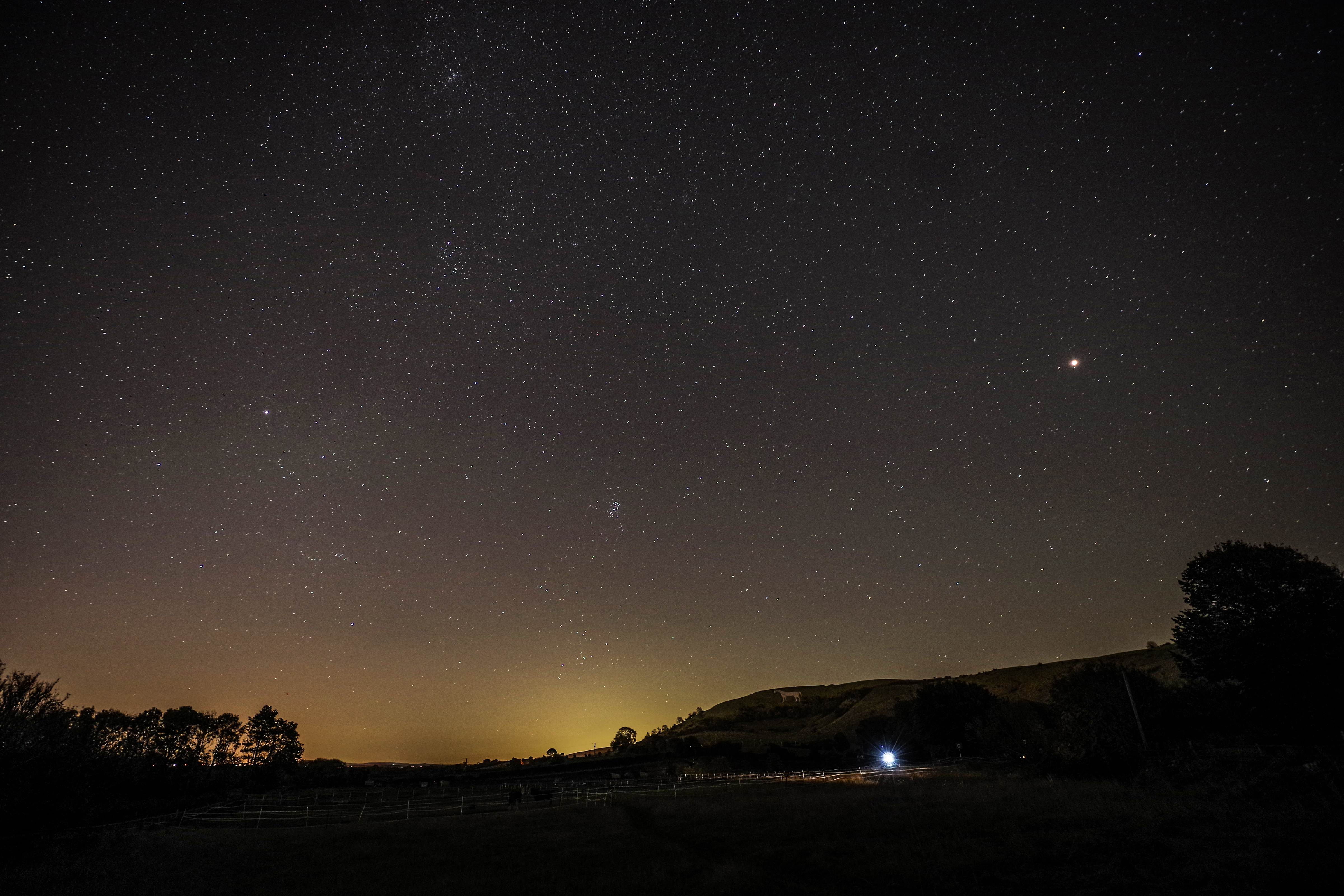
Should you buy the Pentax K-1 Mark II?
If you’re into astrophotography, there’s no doubt that this is the best all-round camera for shooting the stars. From the image quality to the ingenious Astrotracer feature to the Night Mode and external illumination, there’s no better camera for working in the dark.
It’s a great general purpose shooter, too. With enough resolution for fine photographic work and detailed prints, it’s a fantastic option for studio work, landscapes and general practice photography. And the in-body image stabilization means that shooting handheld, even with long lenses, liberates you from your tripod.
Just remember that it’s not the best choice for fast action or sports – and the K-mount isn’t the best supported format in the world, so you won’t find the most exotic range of lenses, but there’s still plenty of great glass out there for pros and amateurs alike.
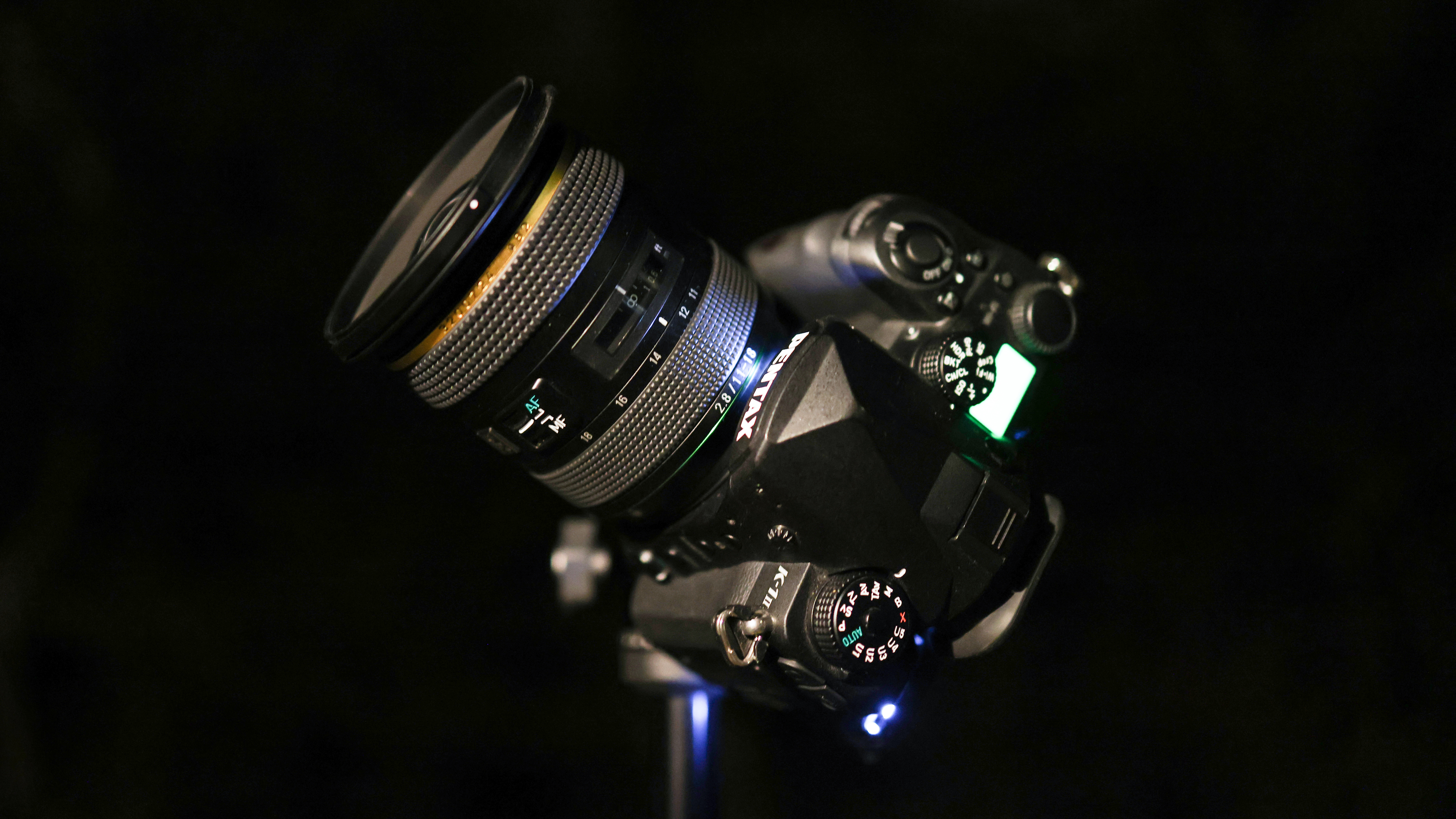
If this product isn’t for you
If you want to shoot astrophotography but you want a mirrorless camera, then you should definitely look to the Canon EOS Ra – a special version of the Canon EOS R that’s been designed specifically for star shooting, with an IR-optimized filter on the sensor and a 30x zoom to make focusing easier.
If you’d like to stick with a DSLR, but want a fantastic all-rounder, then your best bet could be the Nikon D850. Not only does this offer incredible low light performance for things like astrophotography, but it possesses the burst shooting (up to 9fps) and video capabilities (4K 30p) that the Pentax lacks.
If you want to take photos of the stars, but want the convenience of doing it on your phone rather than lugging a big camera and lenses around, the Google Pixel 5a is hard to beat. Its Astrophotography mode brackets series of 15 exposures for 15 seconds each, using software magic to produce a great point-and-shoot solution.
The editor of Digital Camera World, James has 21 years experience as a magazine and web journalist. He has worked professionally in the photographic industry since 2014, when he started as an assistant to Damian McGillicuddy (who succeeded David Bailey as Principal Photographer for Olympus). In this time he shot for clients as diverse as Aston Martin Racing, Elinchrom and L'Oréal, in addition to shooting campaigns and product testing for Olympus, and providing training for professionals. This has led him to being a go-to expert on cameras and lenses, photographic and lighting tutorials, as well as industry analysis, news and rumors for publications such as Digital Camera Magazine, PhotoPlus: The Canon Magazine, N-Photo: The Nikon Magazine, Digital Photographer and Professional Imagemaker, as well as hosting workshops and demonstrations at The Photography Show. An Olympus (Micro Four Thirds) and Canon (full frame) shooter, he has a wealth of knowledge on cameras of all makes – and a particular fondness for vintage lenses and film cameras.
